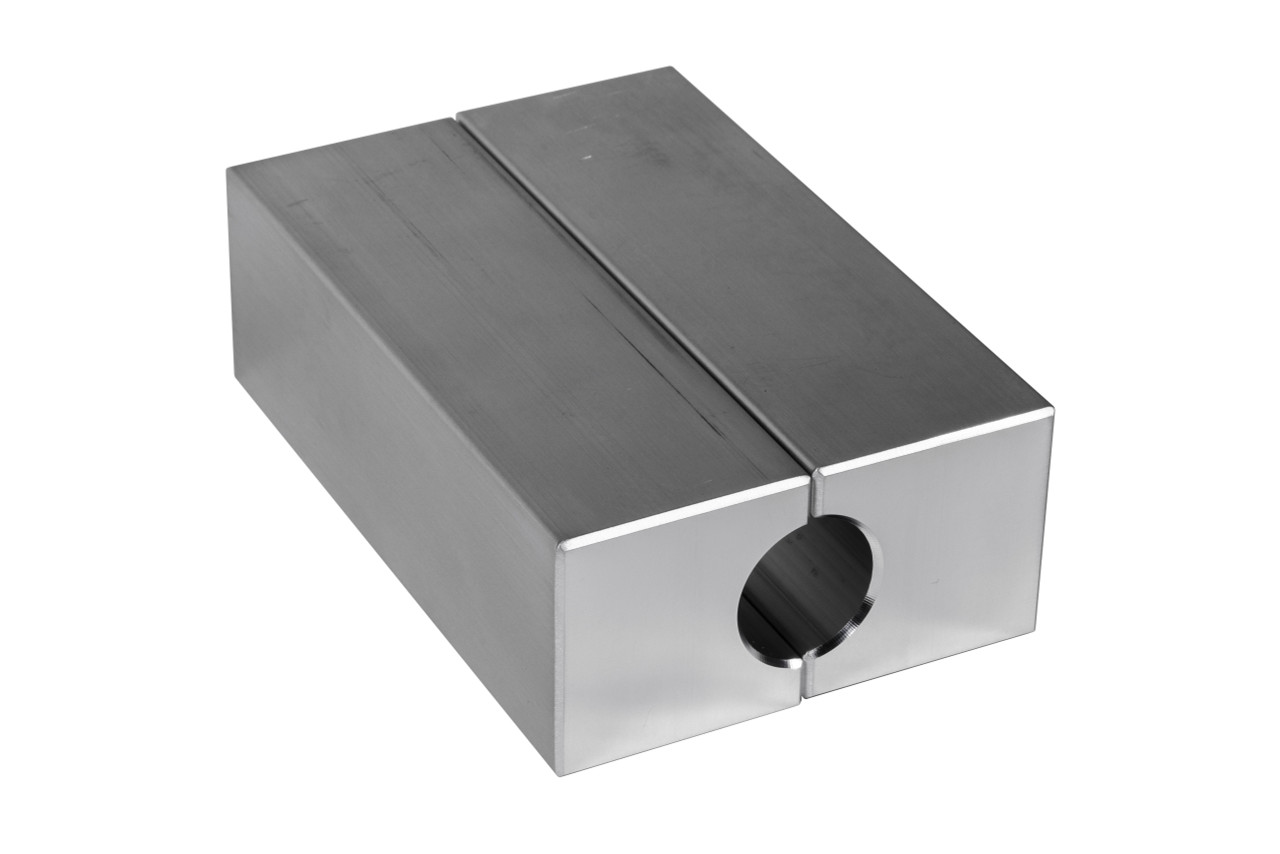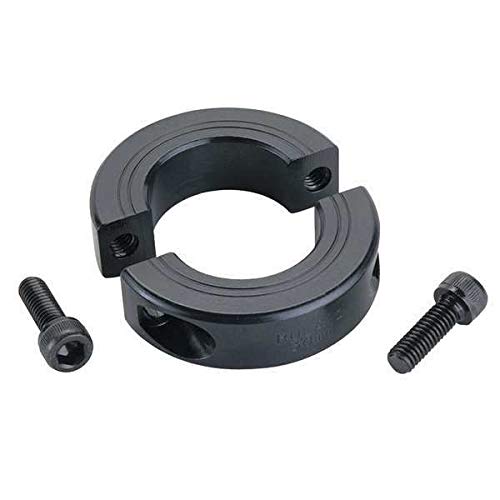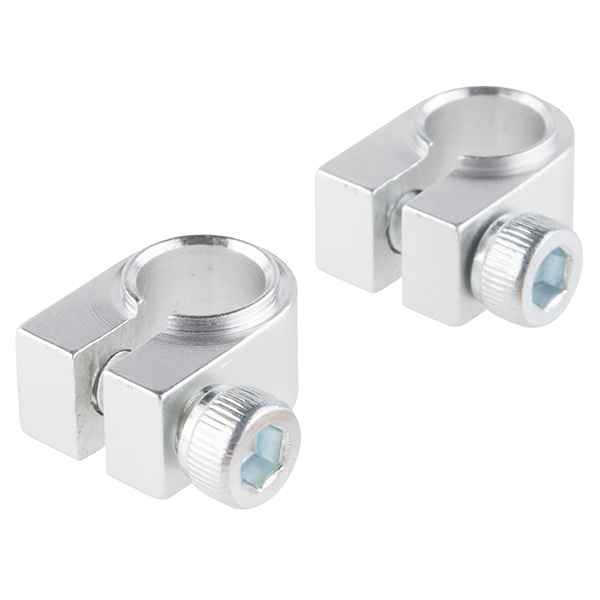Product Description
Product Description
ONE-PIECE
One-piece shaft collars wrap around the shaft for even distribution of clamping forces. This results in a tight fit and greater holding power, without the shaft damage caused by set screws. Clamp collars are easy to remove, indefinitely adjustable, and work well on virtually any shaft. we uses carefully selected materials and proprietary processes on its one-piece collars to ensure the clamping gap remains open for simpler and more precise adjustment, installation and fit. we manufactures one-piece clamp shaft collars in 12L15 lead-free steel with a zinc or proprietary black oxide finish, 303 and 316 stainless steel, high-strength 2571 aluminum, and engineered plastic. Bore sizes range from 1/8″ to 6″ and 3mm to 150mm.ONE-PIE
1.materials:stainless steel,alloy steel ,aluminum ,brass etc.
2.Finish: Zinc plating, Nickel plating,nature
3.competitive price ,prompt delivery
4.OEM service as your drawings
Technics
1.Milling 2.grinding 3.Turning 4.wire-cutting 5.CNC bending 6.CNC machining 7.Stamping 8.forging 9.boring 10.broaching and so on .
Accuracy
1.Milling:0.01mm 2.Turning:0.01mm 3.Grinding:0.002mm 4.Wire-cutting :0.005mm 5.CNC Machining : 0.005mm
Production ability
|
EQUIPMENT LIST |
||||
|
NAME
|
SPECIFICATION |
BRAND |
ORIGINAL PLACE |
QUANTITY |
|
CNC Machines |
Graph 600 |
KNUTH |
CHINA |
20 |
|
1370 |
KAFO |
TAPAN |
20 |
|
|
EDM Machines |
ZNC450 |
BHangZhouNA |
ZheJiang |
20 |
|
ZNC430 |
BHangZhouNA |
ZheJiang |
30 |
|
|
Grinding Machines |
ACC-350ST |
BESFORD |
CHINA |
50 |
|
Auto Lathe Machining |
L150G-II |
OKUMA |
CHINA |
80 |
|
Wire Cutting Machines |
DK7732 |
NEW FAST |
CHNA |
30 |
|
Milling Machine |
SHCM-97A |
GENTIGER |
ZheJiang |
20 |
|
CMM Machine |
CRT-PA574 |
MITUTYO |
JAPAN |
10 |
|
Hardness Tester |
TILO-T60 |
MITUTYO |
JAPAN |
5 |
Productions showing:
| More Detail Informations | |
| Sample Available |
1.Sample is free of charge if we have the existing,you only need to pay the freight cost.Sample will be provided within 3 to 10 working days. 2.If the products is non-standard and no existing tooling inventory,The full mould cost needed prepaid, sample will be provided within 7 to 15 working days, you’ll pay the freight cost. |
| MOQ | 1pcs |
| Pricing Term | EXW HangZhou ,FOB,CIF,CNF,DDU,etc. |
| Payment Term | TT(30% in advance as deposit,balance before delivery),L/C,Western Union,PayPal etc. |
| Port of loading | HangZhou port or ZheJiang port. |
| Lead Time | 15-35 working days after order and deposit received. |
| Warranty |
1.We shoulder the ability based on product categories to determine the warranty, and guarantee more than 18 months. 2.We don’t assume responsibility for the damage which is caused by indirect, accidental events at anytime anywhere. |
Founded in 2005,HangZhou HC Co.,Ltd is an IATF16949:2016 manufacturer.We have more than 20 years of production experience in the production of cnc machining/Milling parts,cold forming,graphite products, We not only have new imported prodution equipment and spacious storage space,but also have a group of experienced workers and professional engineering R & D team.Therefore, our company has enough strength to meet the needs of customers.
Equipments & Working plant:
Worry about our quality problem?
We are an IATF16949:2016 Certifed supplier, strictly execute inspection on ISO quality control system. All our products will pass 10-step inspections: it starts from incoming material inspection to IPQC, then FQC and final inspection with reports before shipment.
Packing:Generally carton or wooden case or plastic foam with standard export wooden pallet , or as per consumer’s requirements.
Certifications:
Your Satisfaction, Our Motivation!
FAQ
Q1. Are you factory or trading company?
A: We are a customized factory with independent oversea trading office .
Q2.Can you provide sample for us?
A: Yes, free sample is available
Q3. What raw material do you use?
A: Stainless Steel, Carbon Steel, Mild Steel, Galvanized Steel, Aluminum alloy, brass, copper, Aluminum etc.
Q4. What finishes can you provide?
A: powder coating, polishing, zinc/nickel /chrome plating, painting, anodized, hot dip galvanized, sandblasted etc.
Q5. How do you ensure quality control?
A: We inspect every process based on your drawings or samples and also check the products before packing
Q6. Is small quantity available?
A: Yes, Small quantity for trial order is available.
Q7. How do you ship the goods?
A: We have our cooperation forwarder, they can deliver the goods to you in very short time with competitive price, and you can ship by your own agent as your convenience.
Q8. How about your delivery time ?
A: 3-10 days for samples and 15-45 days for mass production .
Q: How To Place A Order?
* You send us drawing or sample
* We make the sample and send it to you
* You think the sample is good then place an order and pay us 30% deposit
* We start to make the product
* When the goods is done, we take photoes for your check and you then pay the balance
* We deliver the products to courier company
/* January 22, 2571 19:08:37 */!function(){function s(e,r){var a,o={};try{e&&e.split(“,”).forEach(function(e,t){e&&(a=e.match(/(.*?):(.*)$/))&&1
| Application: | Auto and Motorcycle Accessory, Machinery Accessory |
|---|---|
| Standard: | GB, EN, JIS Code, TEMA, ASME |
| Surface Treatment: | Anodizing |
| Production Type: | Mass Production |
| Machining Method: | CNC Turning |
| Material: | Nylon, Steel, Plastic, Alloy, Aluminum |
| Samples: |
US$ 10/Piece
1 Piece(Min.Order) | |
|---|
| Customization: |
Available
| Customized Request |
|---|

Are there educational resources on troubleshooting common issues with shaft clamps?
Yes, there are educational resources available to help troubleshoot common issues with shaft clamps. Here’s a detailed explanation:
When encountering problems with shaft clamps, it can be helpful to refer to educational resources that provide guidance on troubleshooting and resolving common issues. These resources can offer valuable insights into identifying and addressing problems related to shaft clamps. Here are some examples of educational resources:
1. Manufacturer’s Documentation:
The manufacturer of the shaft clamp may provide detailed documentation that includes troubleshooting information. This documentation can include user manuals, technical guides, or FAQs that address common issues and their resolutions for the specific clamp model. It’s highly recommended to consult the manufacturer’s documentation as a primary resource for troubleshooting.
2. Online Forums and Communities:
Online forums and communities focused on engineering, machinery, or specific industries can be a valuable source of information. These platforms often have discussions and threads dedicated to troubleshooting issues related to shaft clamps. Participating in these forums allows you to interact with experienced professionals, share problems, and seek advice on resolving specific issues.
3. Industry Publications and Magazines:
Industry publications and magazines related to mechanical engineering, machinery, or specific sectors often feature articles, case studies, or technical guides that address common issues encountered with shaft clamps. These resources provide insights into real-world applications and troubleshooting approaches.
4. Professional Associations and Organizations:
Professional associations and organizations related to mechanical engineering and specific industries may offer educational resources on troubleshooting common issues. They may provide technical papers, guidelines, or training materials that cover the topic of shaft clamp troubleshooting. These resources are often developed by experts in the field and can provide valuable insights.
5. Webinars and Online Courses:
Webinars and online courses focused on mechanical engineering or machinery maintenance may include modules or sessions dedicated to troubleshooting shaft clamps. These educational platforms offer interactive learning experiences and provide guidance on identifying, diagnosing, and resolving common issues related to shaft clamps.
When utilizing these educational resources, it’s important to critically evaluate the information and ensure that it aligns with the specific type and model of the shaft clamp you are troubleshooting. Every shaft clamp design may have unique characteristics and considerations. In complex or critical situations, it’s advisable to consult with industry experts or seek professional assistance to ensure accurate troubleshooting and resolution.
By leveraging these educational resources, you can enhance your knowledge and problem-solving skills, enabling you to effectively troubleshoot common issues with shaft clamps and ensure their optimal performance in machinery.

What are the design considerations when using shaft clamps in machinery?
When using shaft clamps in machinery, several design considerations should be taken into account to ensure proper functionality and performance. Here’s a detailed explanation:
1. Shaft Diameter and Tolerance:
The shaft clamp should be designed to accommodate the specific diameter of the shaft it will be clamping. It’s important to consider the shaft’s dimensional tolerance and ensure that the clamp provides a secure and snug fit without excessive play or binding.
2. Clamping Force:
The clamping force exerted by the shaft clamp should be appropriate for the application. Sufficient clamping force is necessary to securely hold the shaft in place and prevent any axial or rotational movement. However, excessive clamping force can lead to deformation or damage to the shaft or other components. The design of the shaft clamp should strike a balance between providing adequate clamping force and avoiding excessive stress on the shaft.
3. Material Selection:
The material used for the shaft clamp should be carefully chosen based on the specific requirements of the application. Factors to consider include mechanical properties, corrosion resistance, and compatibility with the shaft and surrounding components. Common materials for shaft clamps include steel, aluminum, and various alloys. The selected material should provide sufficient strength and durability while considering factors such as weight, cost, and environmental conditions.
4. Alignment and Centering:
Proper alignment and centering of the shaft clamp are essential for the smooth operation of the machinery. The design should ensure that the clamp aligns the shaft concentrically and accurately with other mating components. Misalignment can lead to excessive vibration, increased wear, and potential damage to the machinery.
5. Accessibility and Maintenance:
The design of the shaft clamp should take into consideration the accessibility of the clamp for installation, adjustment, and maintenance purposes. Adequate space should be provided to allow for easy access to the clamp and the tightening mechanism, ensuring convenient and efficient maintenance procedures.
6. Shock and Vibration Resistance:
In applications where shock or vibration is present, the design of the shaft clamp should incorporate features to withstand these dynamic forces. This may involve the use of damping materials, such as elastomers or rubber inserts, to absorb and mitigate the effects of shock and vibration on the clamp and the shaft.
By considering these design considerations, engineers can ensure that the shaft clamps in machinery are properly designed and optimized for their intended applications. This promotes reliable and efficient operation while minimizing the risk of shaft slippage, misalignment, or other issues that could compromise the performance and safety of the machinery.

What are the key features to consider when selecting a shaft clamp for a specific application?
When selecting a shaft clamp for a specific application, several key features should be taken into consideration. These features will help ensure that the chosen shaft clamp is suitable for the intended use and provides optimal performance. Here are the key features to consider:
- Shaft Diameter: The shaft clamp must be compatible with the diameter of the shaft it will be installed on. Measure the diameter of the shaft accurately and choose a shaft clamp that matches or has an adjustable range to accommodate the specific shaft size.
- Material: Consider the material of the shaft clamp, as it can impact factors such as strength, corrosion resistance, and temperature tolerance. Common materials for shaft clamps include steel, stainless steel, aluminum, and plastic. Select a material that suits the environmental conditions and requirements of the application.
- Clamping Mechanism: Evaluate the clamping mechanism used in the shaft clamp. Common types include screw-based mechanisms, lever-operated mechanisms, or cam-style mechanisms. Consider the ease of installation, adjustment, and the level of grip provided by the clamping mechanism.
- Load Capacity: Determine the expected load or torque that the shaft clamp will need to withstand. Check the manufacturer’s specifications to ensure that the chosen shaft clamp can handle the anticipated loads without compromising performance or safety.
- Application Environment: Assess the environmental conditions in which the shaft clamp will be used. Factors such as temperature extremes, humidity, exposure to chemicals, or abrasive particles can affect the performance and durability of the shaft clamp. Choose a shaft clamp that is designed to withstand the specific environmental challenges of the application.
- Certifications and Compliance: In certain industries or applications, specific certifications or compliance with standards may be required. Examples include ISO certifications, FDA compliance for food-related applications, or industry-specific quality management system certifications. Verify that the shaft clamp meets the necessary certifications or standards for your application.
- Installation and Maintenance: Consider the ease of installation and maintenance of the shaft clamp. Look for features such as tool-less installation, accessible adjustment mechanisms, or provisions for lubrication if required. A shaft clamp that is easy to install and maintain can save time and effort in the long run.
- Compatibility with Components: Ensure that the shaft clamp is compatible with the components that need to be secured onto the shaft. Consider factors such as the shape, size, and attachment requirements of the components. The shaft clamp should provide a secure and stable connection without interfering with the functionality of the attached components.
By considering these key features, you can select a shaft clamp that is well-suited for your specific application, providing reliable and efficient performance. It is recommended to consult with manufacturers, suppliers, or industry experts for further guidance and to ensure the most appropriate choice for your specific requirements.


editor by CX 2024-03-27